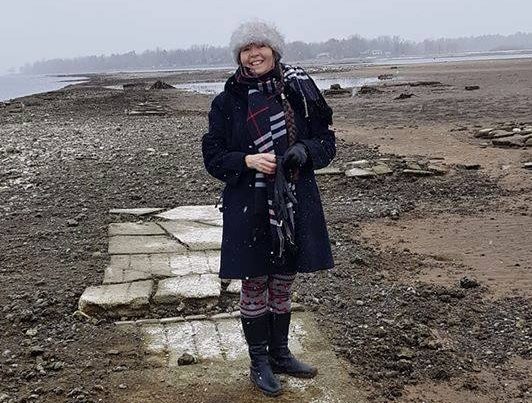SOUTH STORMONT, Ontario – The International Joint Commission (IJC) the Canadian-U.S. body that governs water levels in the Great Lakes and St. Lawrence River states that water levels will continue to drastically fluctuate throughout the season until the ice settles.
Due to unprecedentedly high water levels in Lake Ontario, the IJC has increased outflows through the Moses-Saunders dam at Cornwall. Outflows from the dam are sometimes as high as 10,700 cubic meters per second. This equals out to more than four Olympic size swimming pools flowing through the Cornwall dam every second.
Township of South Stormont Mayor Byran McGillis said that the situation was causing concern.
“There are a lot of people who are concerned with the low water levels right now,” McGillis said. “People are thinking that they (the IJC) are sacrificing this area for other areas. I think what we have to do here is meet with groups that are involved to discuss the future impact.”
These high outflows have lead to extremely low water levels in municipalities immediately west of the dam on the shores of Lake St. Lawrence, such as South Stormont and South Dundas. In fact, water levels have been so low, that the Lost Villages, termed Canada’s Atlantis, have been uncovered. In 1959, 10 villages west of the Moses-Saunders Dam were intentionally flooded during the creation of the St. Lawrence Seaway, including the village of Aultsville. This week, it was once again possible to walk the streets of Aultsville thanks to the low water levels.
“Lake St. Lawrence is the forebay of the Moses-Saunders Power Dam, a major international hydro power generating station. As outflows through the dam are increased, water levels upstream of the dam in the forebay are drawn down. It’s much like pulling the plug in a bathtub in this way,” said Rob Caldwell, Canadian Secretary, International Lake Ontario – St. Lawrence River Board.
Caldwell pointed out that water levels on Lake St. Lawrence had been lower in the past.
The IJC stated on Wednesday, Jan. 8 in a press release that high water outflows from the dam will continue with the aim of reducing possible flooding in the spring.
“Over the next several weeks, as stated in a previous release, regulated outflows will remain as high as feasible based on river conditions. As a result, residents around Lake St. Lawrence are warned to expect both extreme high and low water levels this winter, as the Board implements its winter deviation strategy,” the press release reads. “Extreme low water conditions are occurring now under the very high outflows being released. High water conditions will occur on Lake St. Lawrence whenever outflows are reduced to allow for stable ice cover formation. The winter deviation strategy aims to take full advantage of all opportunities to safely maintain maximum possible outflows and help reduce the probability of high water conditions occurring this year on Lake Ontario.”
Dr. Matt Windle of the St. Lawrence River Institute has been studying the effects of the fluctuating water levels on the wildlife of the St. Lawrence River.
“Land-mobile animals, such as beavers and muskrats, will move to areas that are more suitable,” Windle said. “There are animals, such as turtles, that are a specific concern because they hibernate in the mud and are more at risk than other species. While wildlife can adapt, this process and their ability to adapt is at the forefront of our data collection and studies. Given all the factors that seem to be a new reality for this water system, the River Institute has prioritized the study of the impacts on the ecosystem and are currently in the process of collecting information that will be communicated to the public and relevant agencies.”
Windle explained that the River Institute was providing their research to the IJC to help the governing body make informed decisions as they try to fight high water levels in the Great Lakes.
“We recognize that the low water levels in these shallow bays is very concerning if it results in stranded aquatic life, low oxygen levels in the water, erosion, or loss of winter habitat,” Windle said.





[…] RELATED: Water levels drastically fluctuate in St. Lawrence […]